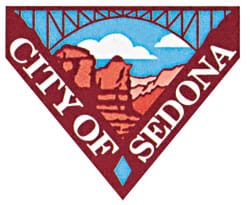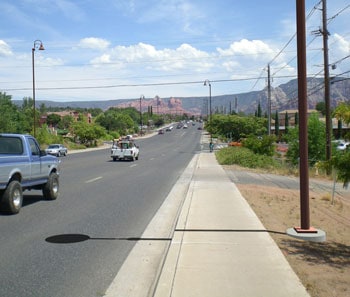Pipes holding the future head from Phoenix to Flagstaff via Interstate 17 but remain untapped in the Verde Valley.
Those giant pipes hold fibers that provide broadband access to Internet users, a luxury a small group wants to make available for area residents.
The Verde Valley Broadband Cooperative hopes to bring residents out of the dark ages into the light.
“I want Sedona to have a future, not just a past,” Jodi Filardo, economic planner for the city of Sedona, said.
Filardo and Clarkdale Community Development Director Sherry Bailey took
the project and have been
encouraging others to join in.
“It just seems like this is one of the few things it’s [the Verde Valley] lacking,” Bailey said. The service would make the Verde Valley more attractive to businesses and in return provide more jobs.
However, to make it a reality will cost millions of dollars and take time, according to Filardo.
The cooperative’s first step will be a planning project to map what infrastructure is available and where, determine what residents want and figure out what is needed to provide the service.
A state project is the in the works, Filardo said, to map all resources in Arizona, and the cooperative has shared
its interest in finding its
connections. Filardo believes Quest and AT&T own fibers in the pipes along I-17 but she’s not sure.
Along with figuring out what it has and where, the cooperative wants feedback from the public. Filardo said the group wants to ensure its pursing something residents desire.
After the location, need and want are determined, the final step of the planning project is to figure out how to do it.
“We want the cost advantage and the speed advantage for the Verde,” Filardo said.
The United States is ranked 20th in the world for broadband penetration, according to the cooperative’s data, and rural areas in the U.S. deal with more outdated technology at a higher price.
Logistics require the cooperative to find a way to tap into the fibers inside the pipes and deliver it to users, Filardo said.
One of the cooperative’s ideas is to make the signal wireless because, Fildardo said, burying cable in rock isn’t an easy job. This approach would mean transmitting the signal either to towers or using microwaves which would then transmit the signal to neighborhoods and homes.
Bringing broadband to the valley has been kicked around for a few years, but the turning point came when Bailey came up with the idea to form a cooperative, according to Filardo.
“It just seems like the most reasonable approach and one we can all get behind and support,” Bailey said. Cooperatives are a proven, democratic model for accomplishing similar feats.
Since the cooperative must receive grants to move forward, it is vital that everyone buys in, according to Filardo. Filardo is also working with a private fund manager through the Northern Arizona Angels Network.
Trista Steers can be reached at 282-7795, ext. 124, or e-mail tsteers@larsonnewspapers.com






















